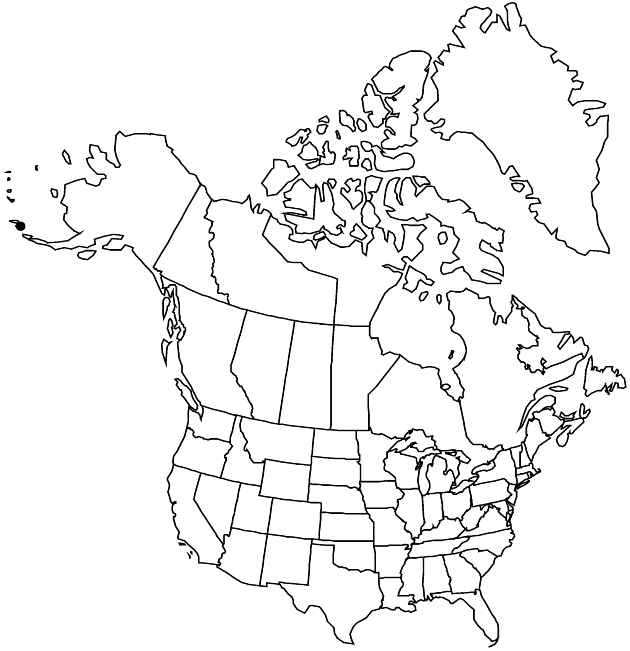Taraxacum trigonolobum
Ark. Bot. 20A(1): 8, fig. 5. 1926.
Plants 8–41 (–56.5 in fruit) cm; taproots seldom branched. Stems 1–5, ascending to erect, purplish, glabrous or glabrescent proximally, ± densely villous distally. Leaves fewer than 10, horizontal or patent to ± erect; petioles widely winged; blades oblanceolate-obovate (largest in distal 1/5) to oblanceolate (often runcinate, particularly early leaves), (3.5–) 6–29.5 × (1.3–) 2.1–5.5 cm, bases cuneate to attenuate, margins sometimes lobed proximally or ± regularly and deeply, usually ± strongly toothed proximally (less so on distal 1/2–1/5), lobes retrorse to straight or antrorse, triangular to deltate, ± acuminate, teeth mostly proximal, rarely on distal 1/4–1/5 or terminal lobes, small to coarse, irregular (1–5 on lobes), apices rounded or truncate to obtuse, rarely acute, apiculate, faces glabrous or glabrate (very sparsely pilose, mainly on midveins). Calyculi 14–20, appressed (to spreading), often pale green, ovate to elliptic-ovate bractlets in 2–3 series, 5–8 × 2.8–4.5 mm, margins narrowly white, scarious (occasionally outer ± ciliate), apices acuminate to caudate, some strongly horned, tips dark-scarious. Involucres dark green, ± glaucous, broadly campanulate, 15–20 mm. Phyllaries 14–20 in 2 series, lanceolate, 2.1–2.8 mm wide, margins ± narrowly scarious (wider proximally, or not in outer series), apices strongly horned, tips purplish with dark center, scarious, ± erose. Florets 120–150; corollas yellow, outer grayish-purplish striped abaxially, 19–25 × 1.3–2.3 mm. Cypselae brown to reddish-brown, bodies oblanceoloid, 3–3.5 mm, cones conic, 0.8–1 mm, beaks slender, 7.5–10 mm, ribs 4–5 prominent (to 15 fine), faces proximally smooth (faintly tuberculate), muricate in distal 1/4; pappi yellowish or cream to white, 7–8 mm.
Phenology: Flowering summer.
Habitat: Herbaceous vegetation, lakeshores, moist banks, alluvial shores, moist meadows, moist heaths, grassy cliff tops
Elevation: 0–600 m
Distribution

Alaska, Russian Far East (Kamchatka)
Discussion
Taraxacum trigonolobum is known only from the Aleutian Islands and islands of the Bering Sea, on the American side. It is probably the taxonomically weakest entity that I am recognizing in this complex, but its distribution and leaf morphology, among other attributes, are distinctive enough for recognition at the present time.
Selected References
None.
Lower Taxa
"fine" is not a number.